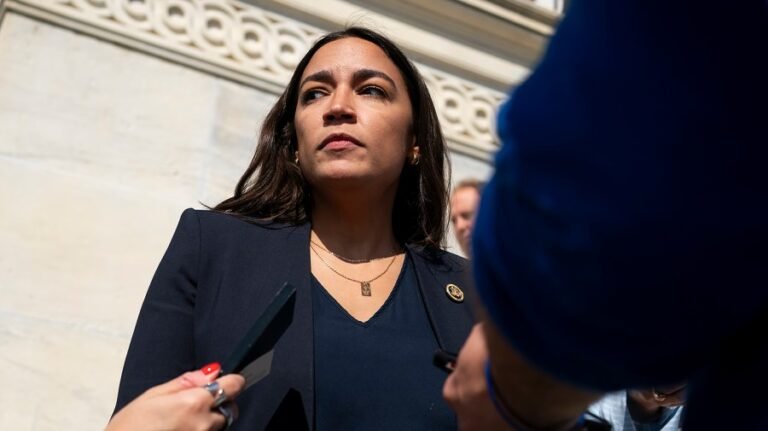
President Trump’s expanded and wide-ranging tariffs have cost Americans, whether U.S. businesses or individuals, about $160 billion so far this year. But his newly applied tariffs on less-expensive imports will not only cost U.S. consumers money — they will cost Trump votes.
Inflation has been one of the public’s top concerns. As The Hill’s Alexander Bolton recently reported, “the costs of groceries, and other essential goods, such as cars, have continued to rise.” Bolton points out that the rise has corresponded with a drop in Trump’s approval rating and a “souring public view of Trump’s handling of the economy.”
And the public doesn’t see the situation improving. A new University of Michigan survey finds consumers expecting prices to rise at 4.8 percent over the next year — about 2 percentage points higher than the current inflation rate. And given Trump’s decision to end the tariff exemption on low-value imports, the public may be underestimating future inflation.
For nearly a century, Congress allowed Americans to buy small-dollar imports without paying tariffs on those purchases — known as the de minimis exemption. For the first 45 years, the amount was very low: $1 to $5. But Congress increased the limit to $200 from 1993 to 2014, and $800 from 2015 to the present.
To be sure, $1 to $5 was almost nothing. But remember, there was no internet, no eBay or Amazon to make it easy for U.S. consumers to identify foreign products and purchase them. By increasing the di minimis exemption just as the internet increased the ease and decreased the cost of buying foreign products, consumers responded. According to U.S. Customs and Border Protection, the number of shipments arriving under the di minimis exemption grew to 4 million a day — from 139 million shipments in 2015 to 1.36 billion shipments in 2024. That’s about four shipments for every person living in the United States.
Now, almost all of those purchases will cost U.S. consumers a lot more. And they won’t be happy about it.
How much more? If the purchase is coming by a delivery service, like DHL or FedEx, U.S. consumers will have to pay whatever tariff is applied to the shipping country, which currently is between 10 percent and 50 percent. The di minimis exemption for imports from China ended in May.
If the shipment is coming through the foreign postal service, for the next six months there is a flat-fee tariff option between $80 and $200, depending on the cost and country of origin (see explainer here). After that, the country tariff will apply.
Personal gifts up to $100 from foreign friends or family escape the tariffs.
Many of the implementation details are vague, and several countries have decided to halt postal shipments to the U.S. for the time being to determine how to handle the shipments and the duties.
Millions of Americans don’t pay much attention to the news and economic details like tariffs. Those price increases will appear as inflation to consumers. Many Trump supporters who cheered the president’s repeated claims that foreign countries would pay the tariffs may be surprised when U.S. Customs requires them to fork over the tariff money.
How much will U.S. consumers have to pay in tariffs? CNBC reports, “CEO of the E-Merchants Trade Council, which represents e-sellers and companies that support e-commerce, (said) the total increase in cost to be paid by small and medium-sized businesses may reach over $71 billion.” Small and medium-sized businesses are less able to eat some of those increased costs, as some large retailers have. Eventually, you, the consumer, will pay the price.
Several news stories have called the longstanding di minimis exemption a “loophole,” as if Americans were evading a tax they owed.
But for decades tariffs on the vast majority of products were very low. In 2024, the average tariff rate was 2.4 percent — though some products from a few countries were higher, while there was no tariff on thousands of items.
When tariff rates are low, it isn’t cost effective for the government to try and collect a levy. Think 2.4 percent of a $20 item of clothing. What’s changed is the size of Trump’s tariffs, and the fact that millions of Americans will have to pay them.
Of course, all of this could change overnight if the courts rule against Trump or he changes his mind, which he frequently does — especially when voters or the markets demonstrate their disapproval. And foreign countries are looking for ways to skirt the tariffs, or at least the highest rates.
But as it stands, consumers and businesses importing even small-dollar products can expect to pay significant tariffs, exacerbating voter anger over already-rising prices. Trump thinks his tariffs will make America great, but they’re only going to make voters mad.
Merrill Matthews is a co-author of “On the Edge: America Faces the Entitlements Cliff.”


